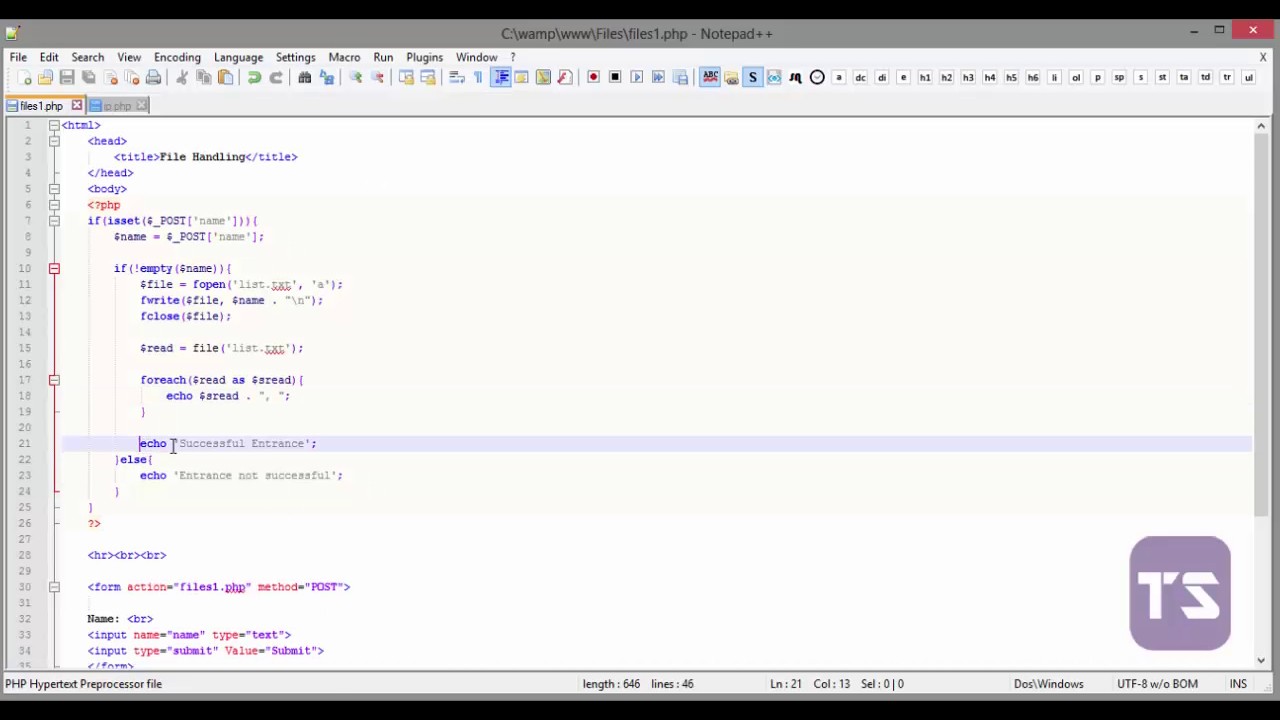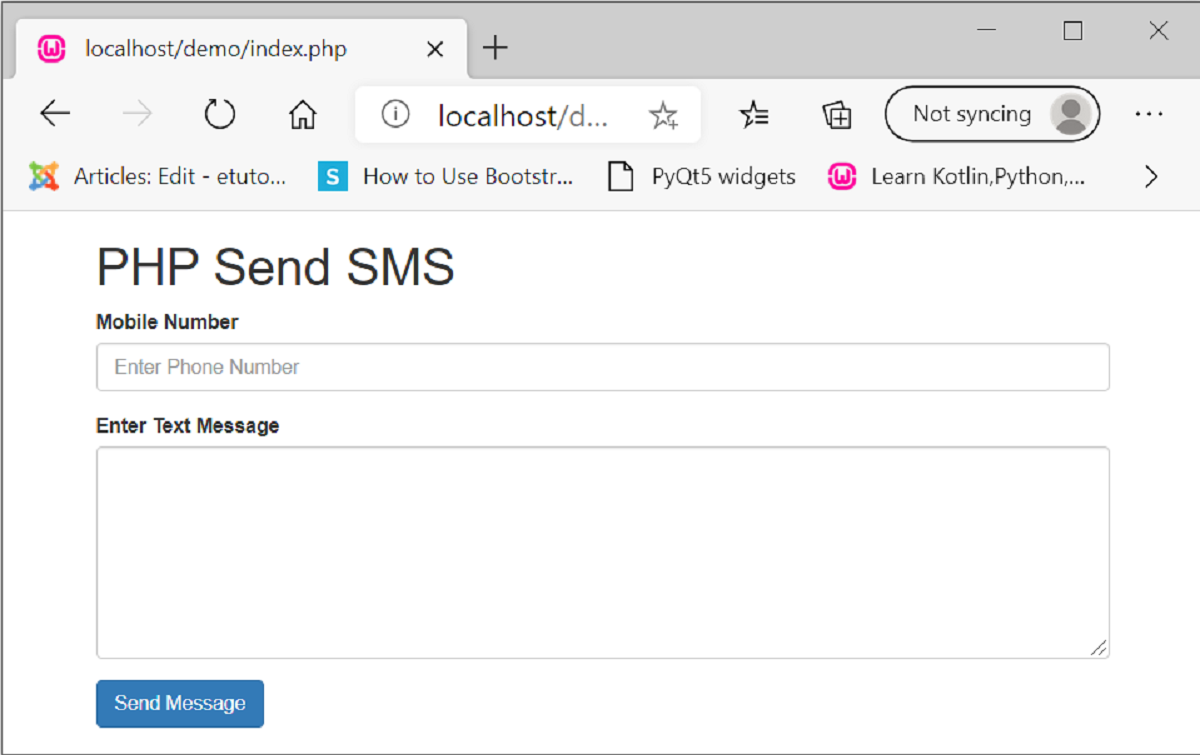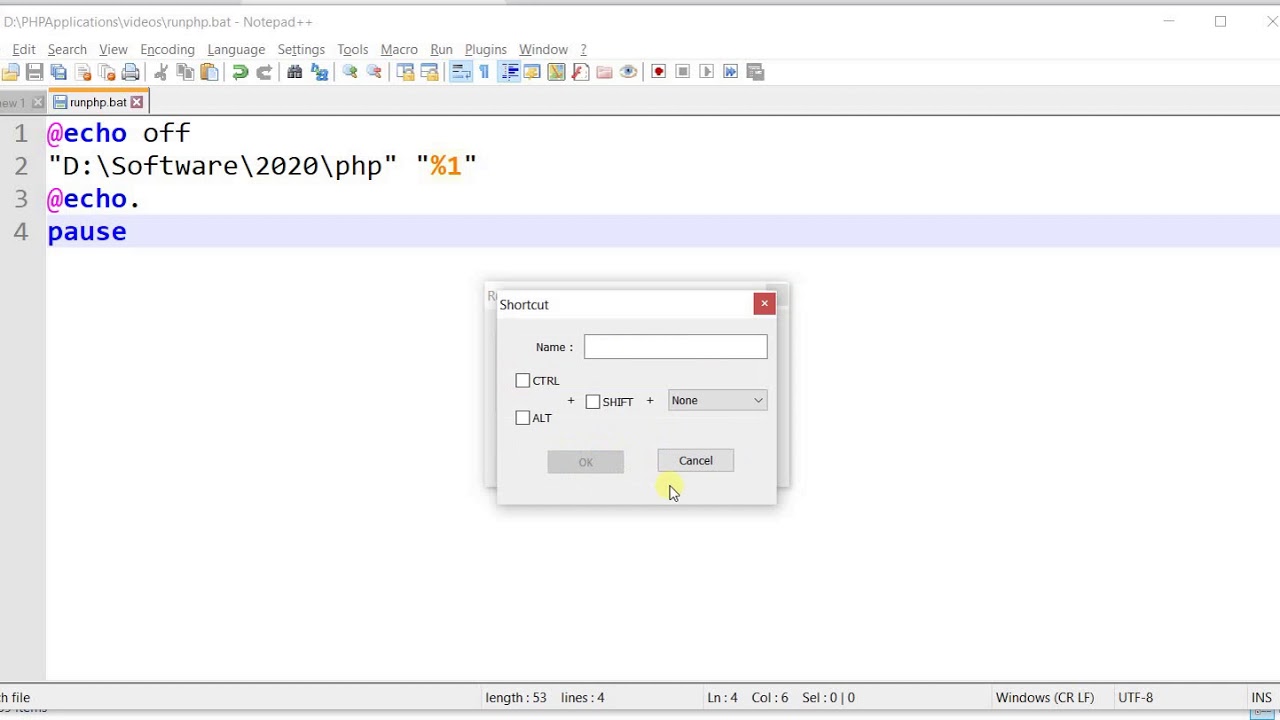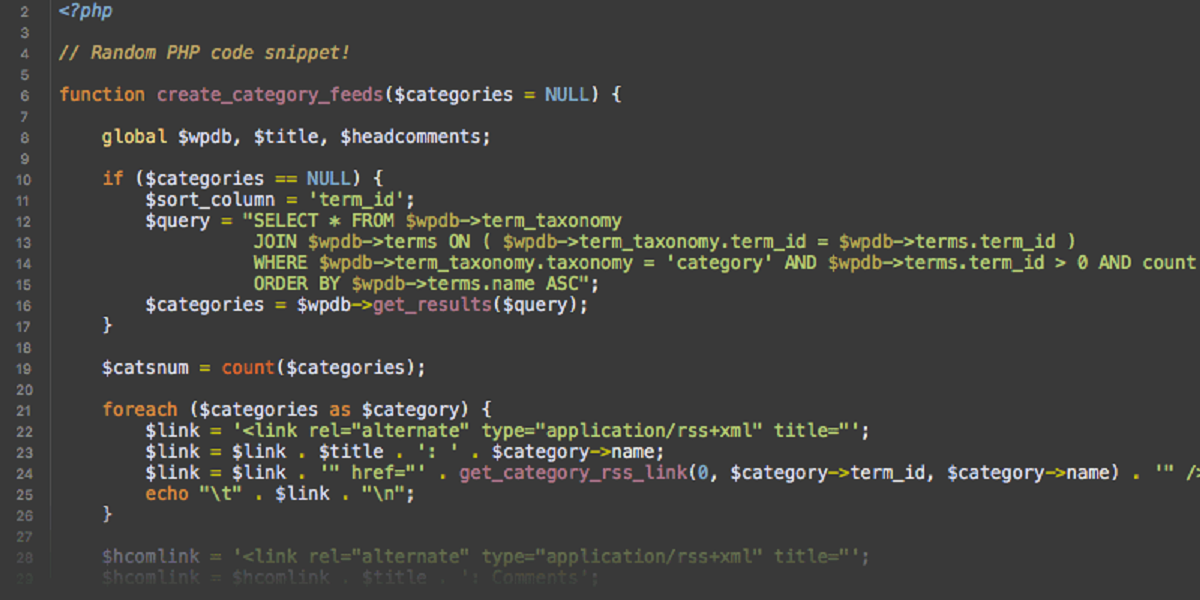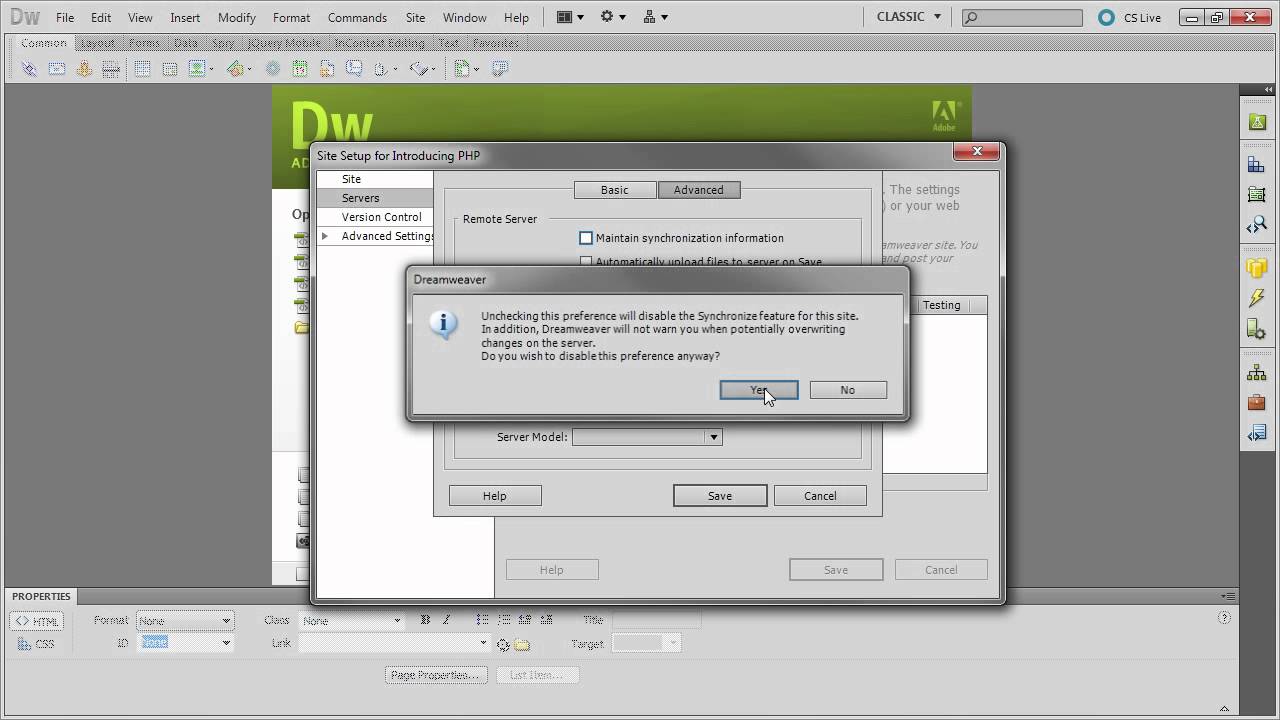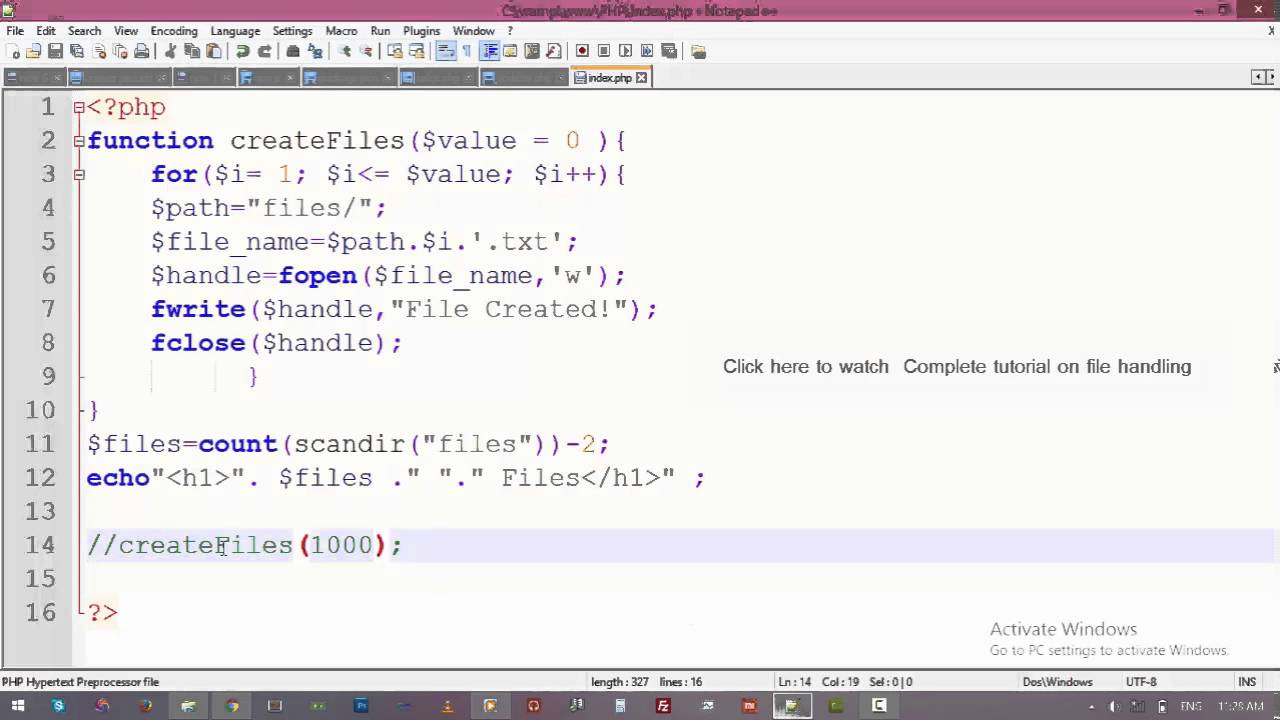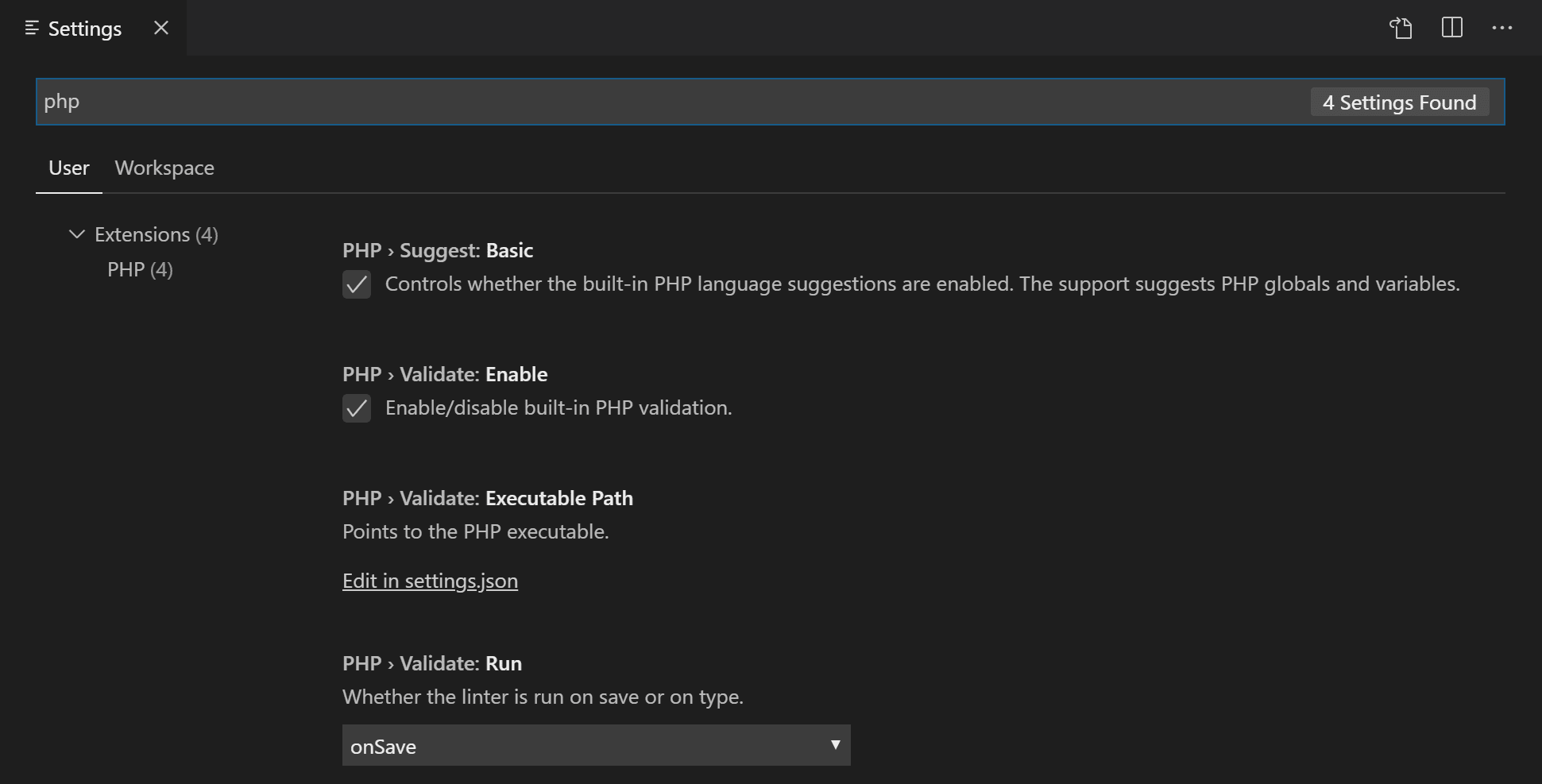Introduction
When working with PHP, you will often encounter situations where you need to write data to a file. Whether you are creating a log file, storing user information, or generating reports, being able to write to a file is a fundamental skill for PHP developers.
In this article, we will explore various methods to write data to a file in PHP. We will discuss how to create a new file, open an existing file, and write data to it. We will also cover appending data to a file, closing the file, and handling errors.
Writing to a file in PHP can be a powerful tool for storing and retrieving information. It allows you to collect and organize data, track progress, and analyze trends. Whether you are a beginner or an experienced developer, understanding how to write to a file is a valuable skill that can enhance your PHP coding repertoire.
By the end of this article, you will have a clear understanding of the different approaches to writing data to a file in PHP. You will be equipped with the knowledge and the confidence to implement file writing functionalities in your own projects.
Setting up the Environment
Before we can start writing to a file in PHP, we need to ensure that we have the necessary environment set up. Here are the steps to get started:
- Install PHP: If you haven’t already, you’ll need to install PHP on your local machine. Head over to the PHP official website (https://www.php.net/) and download the appropriate version for your operating system. Follow the installation instructions provided.
- Set up a Development Environment: To write and execute PHP code, you’ll need a development environment. You can choose from various options such as XAMPP, WAMP, or MAMP. These environments come bundled with Apache, MySQL, and PHP, making it easy to work with PHP files on your machine.
- Create a PHP File: Once your development environment is set up, create a new PHP file. You can use a text editor or an integrated development environment (IDE) such as Visual Studio Code or PhpStorm. Save the file with a .php extension, for example, “write_to_file.php”.
With these steps completed, we are now ready to start writing code to write to a file in PHP. In the next sections, we will explore different methods to achieve this and learn when to use each approach.
Creating a New File
One of the first tasks in writing data to a file is creating a new file to store your information. PHP provides various functions for creating new files, such as fopen() and file_put_contents(). Let’s explore each method in detail:
- fopen(): The fopen() function is a versatile method for file handling in PHP. It can be used to create a new file by specifying the file name and the file mode. The file mode determines how the file will be accessed. To create a new file, we use the “w” mode, which stands for write. Here is an example:
- file_put_contents(): The file_put_contents() function is a simpler method for creating a new file. It takes two parameters: the file name and the data to be written to the file. The function automatically creates the file if it doesn’t exist and overwrites it if it does. Here is an example:
php
$file = fopen(“new_file.txt”, “w”);
This code will create a new file called “new_file.txt” in the same directory as your PHP file. If the file already exists, it will be overwritten. If the file cannot be created, the function will return false.
php
file_put_contents(“new_file.txt”, “This is the content of the new file.”);
In this example, we create a new file called “new_file.txt” and write the specified content to it. If the file already exists, it will be overwritten. If the file cannot be created, the function will return false.
Both fopen() and file_put_contents() are effective ways to create new files in PHP. The choice between the two depends on whether you need more fine-grained control with fopen() or prefer the simplicity of file_put_contents().
Now that we know how to create a new file in PHP, let’s move on to the next section and explore how to open an existing file for writing.
Opening an Existing File
Before we can write data to an existing file, we need to open it in PHP. Opening a file allows us to access its content and make modifications. PHP provides the fopen() function for this purpose.
The fopen() function takes two parameters: the file name and the file mode. The file name is the path to the file you want to open, either relative or absolute. The file mode determines how the file will be accessed. The most commonly used modes for writing to a file are “w” for write and “a” for append.
Let’s see how we can open an existing file for writing:
- Opening for Write (w): If you want to open a file for writing, you can use the “w” mode with fopen(). This mode will truncate the file to zero length if it exists, or create a new file if it doesn’t exist. Here is an example:
- Opening for Append (a): If you want to add data to the end of an existing file, you can use the “a” mode with fopen(). This mode allows you to write data at the end of the file without overwriting its existing content. Here is an example:
php
$file = fopen(“existing_file.txt”, “w”);
In this example, we open the file “existing_file.txt” in write mode. If the file already exists, its content will be cleared. If the file doesn’t exist, a new file with that name will be created.
php
$file = fopen(“existing_file.txt”, “a”);
In this example, we open the file “existing_file.txt” in append mode. If the file already exists, the data will be added to the end of the file. If the file doesn’t exist, a new file with that name will be created.
Opening an existing file in PHP allows us to prepare it for writing. Whether you choose to open the file in write mode or append mode depends on your specific requirements. Now that we know how to open an existing file, let’s move on to the next section and learn how to write data to it.
Writing Data to a File
Now that we have created a new file or opened an existing one, it’s time to write data to it in PHP. There are multiple ways to accomplish this, depending on your specific needs. Let’s explore some of the commonly used methods:
- fwrite(): The fwrite() function is a powerful method for writing data to a file. It takes two parameters: the file handle returned by the fopen() function and the data to be written. Here is an example:
- file_put_contents(): The file_put_contents() function can also be used to write data to a file. It takes two parameters: the file name and the content to be written. Here is an example:
php
$file = fopen(“file.txt”, “w”);
fwrite($file, “This is the content that we want to write to the file.”);
fclose($file);
In this example, we first open the file “file.txt” in write mode using fopen(). Then, we use fwrite() to write the specified content to the file. Finally, we close the file using fclose() to release the resource.
php
file_put_contents(“file.txt”, “This is the content that we want to write to the file.”);
In this example, we directly use file_put_contents() to write the specified content to the file “file.txt”. The function automatically handles opening, writing, and closing the file.
These methods provide ease and flexibility when writing data to a file in PHP. Whether you choose to use fwrite() or file_put_contents() depends on your preference and the complexity of your requirements.
Now that we know how to write data to a file in PHP, let’s move on to the next section and explore how to append data to an existing file.
Appending Data to a File
In addition to writing data to a file, there are cases where we might need to append new data to an existing file without overwriting the existing content. PHP provides methods that allow us to append data to a file easily. Let’s explore two common approaches:
- fwrite() with “a” mode: To append data to an existing file, we can use the fwrite() function with the “a” mode in fopen(). The “a” mode stands for append mode, which allows us to add data to the end of the file without overwriting it. Here’s an example:
- file_put_contents() with FILE_APPEND flag: Another method to append data to a file is by using the file_put_contents() function along with the FILE_APPEND flag. This flag ensures that the provided content is appended to the file instead of overwriting it. Here’s an example:
php
$file = fopen(“existing_file.txt”, “a”);
fwrite($file, “This is the new content to append.”);
fclose($file);
In this example, we open the file “existing_file.txt” in append mode using fopen(). Then, we use fwrite() to write the new content to the end of the file. Finally, we close the file using fclose().
php
file_put_contents(“existing_file.txt”, “This is the new content to append.”, FILE_APPEND);
In this example, we use file_put_contents() to directly append the new content to the “existing_file.txt” file. The FILE_APPEND flag ensures that the content is added to the end of the file without overwriting.
Appending data to a file can be useful for scenarios where continuous updates or additions are required. Knowing how to append data using fwrite() or file_put_contents() gives us the flexibility to manage file content efficiently.
Now that we have learned how to append data to a file, let’s move on to the next section to understand the importance of properly closing a file after writing to it.
Closing the File
After we have finished writing or appending data to a file in PHP, it is crucial to properly close the file. Closing the file ensures that any pending operations are completed and that system resources are released. Failure to close a file can lead to memory leaks and potential issues with file handling.
To close a file that we have opened, we use the fclose() function. This function takes the file handle returned by the fopen() function as a parameter. Let’s take a look at an example:
php
$file = fopen(“file.txt”, “w”);
// Write or append data to the file
fclose($file);
In this example, we open the file “file.txt” in write mode using fopen(). After performing the necessary write or append operations, we then close the file using fclose(). This ensures that any cached data is flushed to the file and that the file handle is released.
It is important to note that failing to close a file after writing to it can lead to unexpected behavior and potential resource leaks. Therefore, always make sure to include the fclose() function after you have finished working with a file.
Now that we understand the importance of closing a file, let’s move on to the next section and discuss error handling when writing to a file in PHP.
Error Handling
When writing to a file in PHP, it is important to have proper error handling in place. This will help us identify and handle any issues that may occur during the file writing process. Let’s explore some common error handling techniques:
- Checking return values: Most file-related functions in PHP return a value that indicates success or failure. It is good practice to check the return value of functions like fopen(), fwrite(), and file_put_contents() to ensure that the file operations executed successfully. For example:
php
$file = fopen(“file.txt”, “w”);
if ($file) {
// Perform file writing operations
fclose($file);
} else {
echo “Unable to open the file.”;
}In this example, we check if the fopen() function successfully opened the file. If it did, we proceed with the file writing operations. Otherwise, we display an error message indicating that the file couldn’t be opened.
- Error reporting: PHP provides the error reporting feature, which helps to display error messages and warnings. By enabling error reporting, we can get more detailed information about any errors that occur during file writing. To enable error reporting in PHP, we can use the error_reporting() function or modify the php.ini file. Here is an example:
- Exception handling: Another approach is to use exception handling when writing to a file. By utilizing try-catch blocks, we can catch exceptions thrown during file operations and handle them accordingly. Here’s an example:
php
try {
$file = fopen(“file.txt”, “w”);
// Perform file writing operations
fclose($file);
} catch (Exception $e) {
echo “An error occurred: ” . $e->getMessage();
}In this example, any exceptions thrown during the file writing operations will be caught in the catch block. We can then handle the exceptions and display an appropriate error message.
php
error_reporting(E_ALL);
Enabling error reporting will display any file-related errors, making it easier to identify and address issues that arise during file writing.
By implementing error handling techniques like checking return values, enabling error reporting, or using exception handling, we can effectively handle errors that may occur when writing to a file in PHP. This helps us diagnose and resolve issues more efficiently.
Now that we have covered error handling, let’s summarize what we have learned so far in the concluding section.
Conclusion
In this article, we have explored the process of writing to a file in PHP. We learned how to set up the necessary environment by installing PHP and creating a development environment. We also covered creating a new file using functions like fopen() and file_put_contents(), as well as opening an existing file for writing or appending.
We delved into different methods for writing data to a file, including fwrite() and file_put_contents(). We discovered the importance of closing a file after writing to it to ensure proper resource management. Additionally, we discussed error handling techniques such as checking return values, enabling error reporting, and implementing exception handling.
Being able to write to a file in PHP is a vital skill for any developer. It enables us to store and manage data, create logs, generate reports, and much more. By understanding the various approaches to file writing and implementing error handling, we can ensure the successful execution of file-related operations.
Remember to consider the specific requirements of your project when choosing a method for writing to a file. Whether you need to create a new file, open an existing file, append data, or handle errors, PHP provides flexible and powerful functions to accomplish these tasks.
So, armed with the knowledge gained from this article, you are now well-equipped to write to a file in PHP and handle any errors that may arise along the way. Happy file writing!







